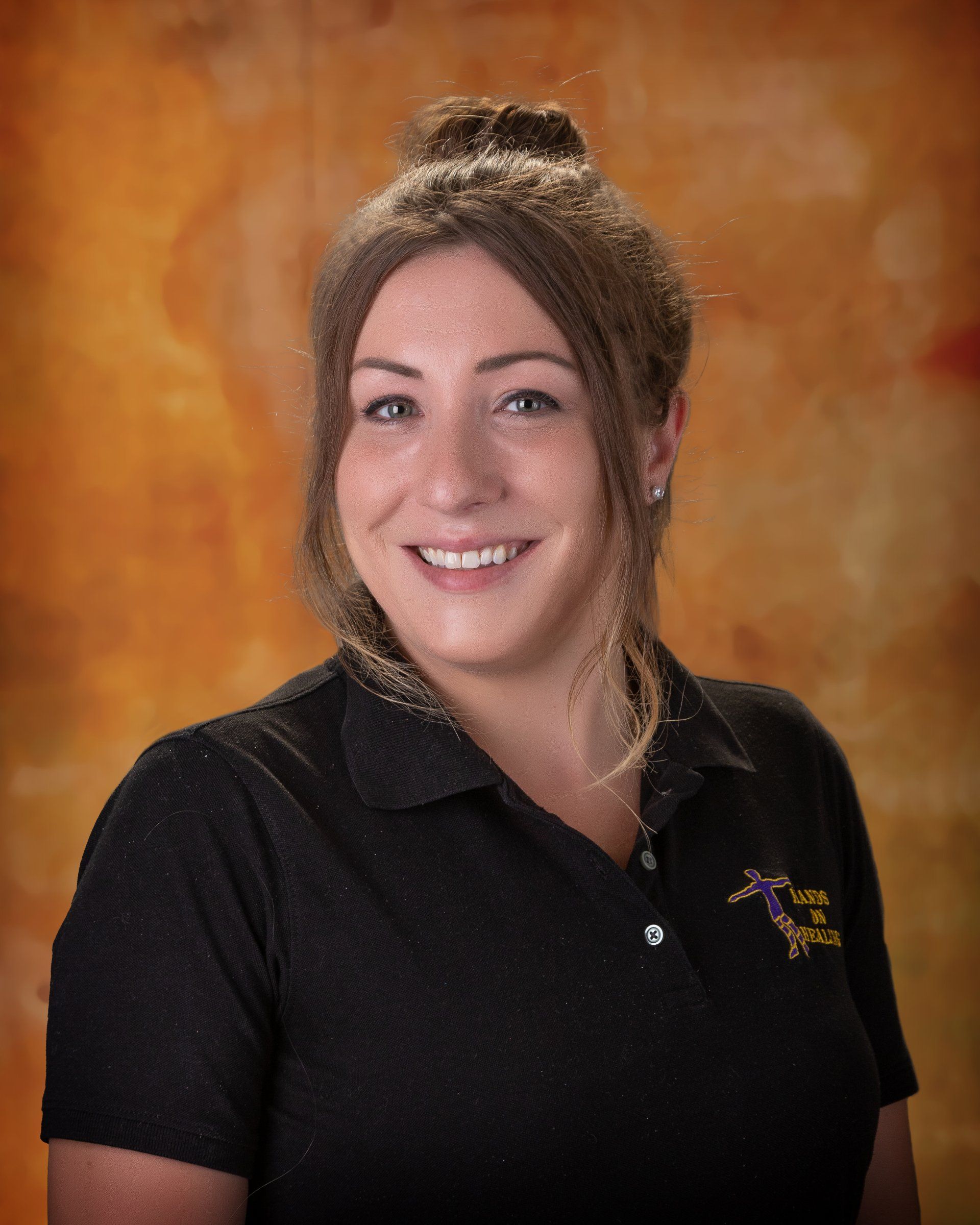Neuromuscular Massage & Therapy
What is Neuromuscular Massage?
Neuromuscular massage refers to a massage dealing with the “neuro,” or the neurological system, and the muscles, or the muscular system.
Neuromuscular massage is also known as Neuromuscular Therapy or NMT((Source: Wikipedia, “Neuromuscular therapy,” Link to website »)).
NMT is a specialized form of soft tissue manual therapy provided by Hands On Healing.
Our therapists perform this type of massage because of their training and familiarity with the neurological system and its effects on the musculoskeletal system.
Neuromuscular Therapy utilizes an analytical, inquisitive approach during a massage session to help determine the source of a client’s pain or discomfort.
The source of pain is identified using a “press and hold” technique on Myofascial Trigger Points, areas located within the muscle.
According to WebMD: ((Source: WebMD, “Massage Therapy Styles and Health Benefits,” Link to website »))
“Neuromuscular therapy is a form of soft tissue manipulation that aims to treat underlying causes of chronic pain involving the muscular and nervous systems. This medically-oriented form of massage addresses trigger points (tender muscles points), circulation, nerve compression, postural issues, and biomechanical problems that can be caused by repetitive movement injuries.”
What are “Trigger Points?”
Trigger points are areas of the body that you cannot see, but they’re irritable and sensitive to the touch.
Trigger points develop in muscle tissue for many reasons, including:
- Poor blood circulation
- Physical trauma
- Bad posture
Poor circulation restricts the flow of blood and nutrients to the muscle. A deficiency of essential vitamins and minerals like vitamin C, calcium, phosphorus, and iron can lead to a buildup of lactic acid and cause muscles to feel tight and sore.
Injuries to cartilage, bone, muscle, and fascia impinge nerves and interfere with their ability to transmit signals to the brain correctly.
Improper movement, repeated patterns of movement, injuries, and a variety of other issues can create poor posture. These can lead to development of trigger points and may requiring a thorough Postural Analysis to help understand the trigger points.
No matter what the reason, when trigger points are activated your muscles and nerves suffer.
What makes a trigger point challenging to diagnose and locate is its ability to “trigger” pain in other areas of the body that are seemingly unrelated.
This transference of pain is also called “referral pain.”
What is Referral Pain?
Referral pain is a phenomenon in which areas located far from the source experience sensations of pain, tingling, or numbness.
For example, many headaches are caused by trigger points in the neck and shoulders, can even be a trigger point down at the shoulder blade. Another example would be pain traveling down the leg is sometimes caused by a trigger point in the glutes. This is where someone educated in the patterns make a difference in being able to treat effectively.
What’s the Difference Between Traditional Massage & NMT?
The differences between the two have to do with the intention and design of the session itself.
For “traditional” massage, sessions are often oriented around creating a full body sense of softness and calm.
Traditional massage therapy “quiets” the nervous system, often repeating similar strokes that lead to a calm meditative state.
By contrast, NMT focuses on the investigative and problem-solving aspects of soft tissue therapy.
How Does NMT Work?
Clients often approach us with a specific problem.
For instance, they’ll report difficulty turning their neck to the left while being capable of fully rotating it to the right.
Our primary goal as Neuromuscular Therapists is to determine which muscles are involved or contributing to your condition.
Additionally, NMT sessions must be conducted in a manner that is relaxing as well as efficient and effective.
This requires an extensive knowledge of anatomical knowledge and excellent palpation skills.
What to Expect During an NMT Session
Clients receiving traditional massage are typically quiet and free to allow their minds to wander or rest.
With neuromuscular therapy, the therapist may ask you a series of questions, like:
- “When I do this, what do you experience?”
- “Which is more tender, this or that?”
- “Does this spot feel relevant to you?”
- “I detect something here, do you feel it, too?”
All these questions and comparisons are part of the NMT problem-solving process and essential to its success.
This requires clients to be more alert and responsive. Without a client’s active participation, addressing a specific problem through NMT is a problematic endeavor.
Can NMT be Combined with Other Therapies?
Yes!
Our massage providers may choose to incorporate NMT techniques during a traditional massage session.
Combining the two helps clarify problem areas and improves the overall effectiveness of the primary therapy being provided.
Your treatment might consist of 20% NMT techniques and 80% traditional.




